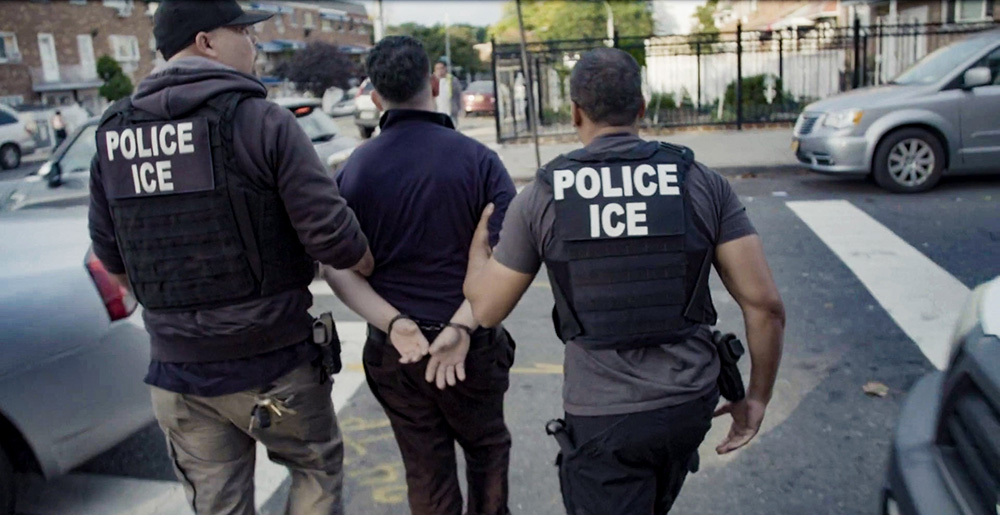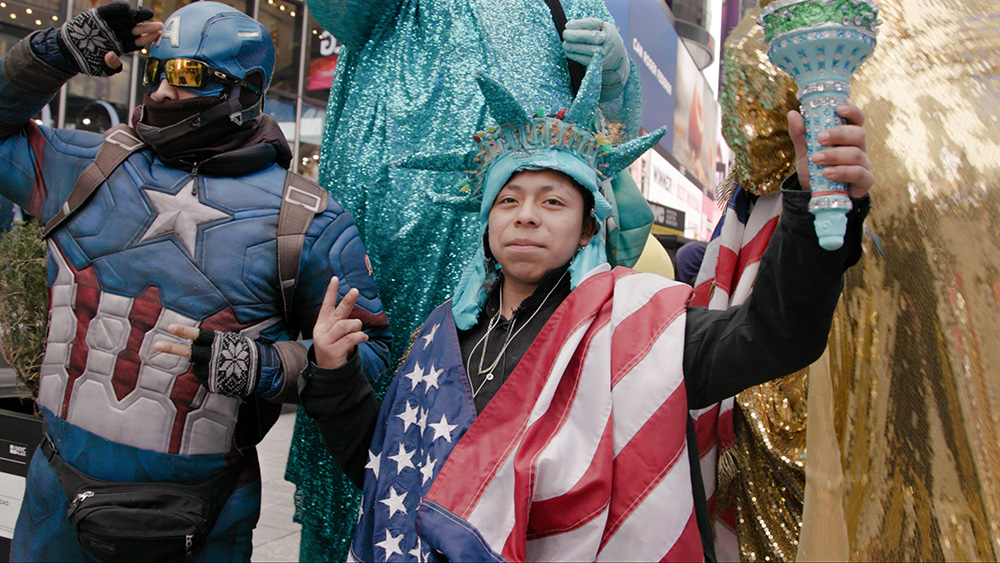The laws have to change.
The American immigration system is broken. We can argue about how and where all we want, but that simple fact should be something for which both sides of the political aisle can agree. Have things gotten worse since Republicans took over the Senate in 2015? You bet. That should be a universal truth too once you look into policy changes that have spiraled towards crimes against humanity status ever since Donald Trump entered the White House. Suddenly a nation that opened its arms to refugees and immigrants—something everyone in this country besides indigenous populations are—decided to slam the door shut. Anyone who tried to enter for illegal or legal reasons became lumped together, incarcerated, and treated like prey to either send back now or hunt later.
And while this topic might not have been the reason why directors Zach Ingrasci and Chris Temple befriended young Luis and his family in Guatemala, his eventual arrival into the United States became a crucial avenue towards exposing the system’s shortcomings. Add a year-long journey to acquire permission to film inside ICE (Immigration and Customs Enforcement) and meet the woman (Judy) in charge of the borough where Luis ultimately landed after a two-month incarceration at the border and the pieces started to fall into place as far as capturing the issue from all sides. This allows Five Years North (titled after the period of time many Guatemalans stay in the US en route to making money for a planned return) the room to introduce its big takeaway: privilege.
That’s what separates Luis and Judy. Both have an aging grandmother they learned a lot from and parents who are elated to have children willing to help them care for those in the family who are struggling to do so on their own. But he grew up in an impoverished Central American village while she was raised in the United States after her Cuban mother and Puerto Rican father moved to New York City. He had to quit school at age ten to start working while she was afforded the chance to continue her education and become an accountant. Despite those differing roads, however, they did eventually both come to the realization that their current status wasn’t going to be quite enough to survive. They needed more stability.

Luis saw the potential of finding it in New York—a land of opportunity where five to ten years of work should net enough to pay off the debt to those who smuggled him across the border, help cover his family’s bills back home, and save for his future. Judy saw the potential of finding it through a government job—a source of health insurance, regular pay bumps, and pensions. His pursuit was for an abstract while hers provided her a choice. It didn’t matter what the job was, Luis would do it until he couldn’t. Judy conversely selected ICE all on her own despite her heritage and her mother’s legacy of forty-plus years helping the refugees she’d send back. He earns our sympathy. She receives our confusion.
Don’t get me wrong. Ingrasci and Temple do provide Judy a platform to defend herself. She rightfully refuses to condone new ICE directives that pool non-criminals with criminals, remove mandated prioritization for the latter (driving up deportations because it’s much easier to arrest those who aren’t actively hiding from authorities since they’re doing their best to contribute in hopes of citizenship), and that apparently prevent federal courts from communicating with immigration courts (the result of which is devastating for a man she arrests). A refusal to condone isn’t the same as a rejection of bad policy, though. And her ability to say she “can’t bring work home,” “is just doing her job,” or “improving things is above her pay grade” starts sounding like approval before long.
The juxtaposition with Luis does her no favors. He also struggles to reconcile his choices, but the personal stakes are so much higher. Does he attend school like he knows he must to not risk making his forthcoming trial impossible to win? Or does he skip class to keep multiple jobs so his debt doesn’t take his parents’ Guatemalan home as collateral? While Judy can shut off the human cost of her decisions, Luis battles panic attacks as the stress mounts with every passing day knowing his chances of a judge allowing him to stay have reduced. Either he plays by the rules to get deported anyway with no means of paying his coyotes or he goes on the run to make whatever he can before getting caught.

Ingrasci and Temple shift between their forward trajectories with a few necessary interjections from those caught on the periphery: Luis’ family down south, Judy’s family in New York, the schools and social workers trying to help him, and the distraught collateral damage left fending for themselves in the wake of arrests performed by her. Luis’ grandmother has to be carried in a chair to the hospital only to be saddled with more bills while Judy cuts her grandmother’s food at the dinner table. Luis had to travel thousands of miles for the chance to have a stable future while Judy’s son only has to follow her footsteps as far as ignoring the impact her actions have on a community from which they’re only one and two generations removed.
Am I being too hard on Judy? I don’t think so. She might be a product of what our country has become (dehumanizing social policies into numbers on a spreadsheet so those enforcing the law can detach themselves from the complex effect of the aftermath), but that doesn’t exonerate her complicity. I don’t think I’m being too easy on Luis either since he’s also a product of that same ideological shift. If we as a nation streamlined our immigration process and made it easier for people like him to excel in an economy he’s already helping, Judy’s department wouldn’t be so overwhelmed and her “personal morality” could do some real good beyond assuaging her guilt. Until that happens, the plight for those on both sides worsens.

photography:
courtesy The 2050 Group

